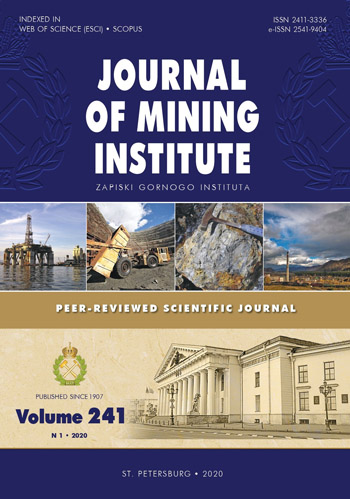Methodology for Calculating the Stability of the Polymer Operating String in Permafrost
- 1 — Transbaikal State University, Chita, Russia
- 2 — Institute of Natural Resources, Ecology and Cryology SB RAS, Chita, Russia
Abstract
The goal of this paper is to develop a methodology for calculating the stability of an annular cross-section string casing made of polymer material used for the development of mineral deposits by underground leaching in permafrost formations. The aim was to determine the geometric parameters of the casing and to ensure its operational reliability. The relevance of the research is associated with the peculiarities of external influences on the string, for example, a geotechnological well operating in permafrost formation under conditions of additional exposure to ice pressure during freezing of water in the borehole annulus. This effect is usually accompanied by deformation of the casing due to ice pressure, which can lead to string collapse, abnormal operation and the risk of contamination of the geological environment. The proposed calculation method for a polymer casing is based on simulation of objects using the finite element method. We used the spatial finite elements to model the interaction of key elements of the geotechnological natural-technogenic complex: a polymer casing, ice in the annulus space and homogeneous or heterogeneous rock masses adjacent to the well. The results of the study are presented in the form of tables and patterns of displacements, which reflect stresses and strains in the elements of the calculation scheme. The analysis of the obtained results confirms the possibility of using polymer casings of different technological purposes in various conditions of permafrost formation, including extreme ones. The results of the redistribution of pressure created by ice during the freezing of water in the borehole annulus to the rock mass and the string are evaluated. Interdependent deformations of the rock mass and operating string during freezing of water in the borehole annulus are determined. The necessity of considering the properties of the rock mass in determining the pressure on the string is established. The conditions for the collapse of the string with a different combination of its parameters are revealed.
